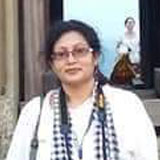Thailand’s Songkran, the spiritual cousin of Sankranti
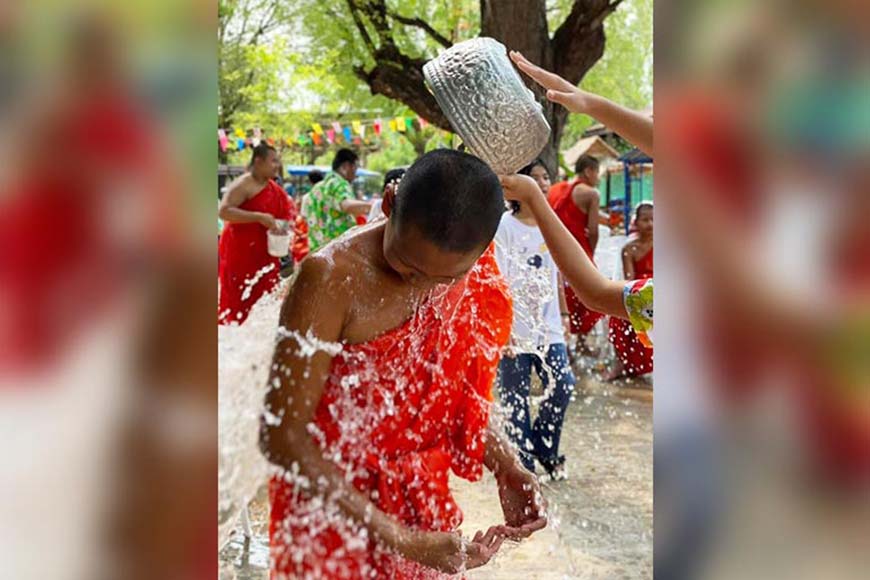
Playing with water
They call it Songkran. All those familiar with Thailand and its culture will know what I am talking about – the Thai new year, whose name is derived from Sankranti – the Sanskrit word for the transmigration of the sun from one zodiac to another following the solar calendar.
Of all the Southeast Asian nations influenced by Hindu philosophy and culture, Thailand is perhaps the one which has most strongly retained the influence. In fact, Thai culture is a wonderfully syncretic and seamless mix of Hinduism and Buddhism, coupled with immense pride and reverence for the ruling royal family.
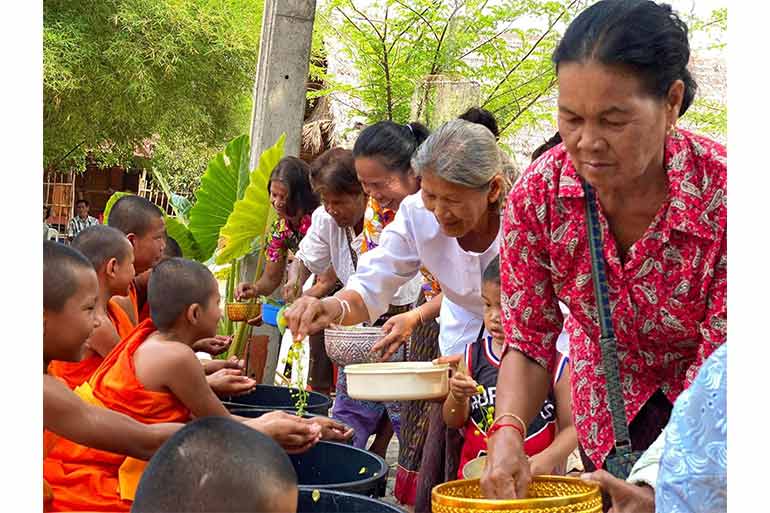 Disciples washing the feet of saints and respected elders
Disciples washing the feet of saints and respected elders
This year, the dates for Songkran celebrations are April 13-15, though the actual festive period usually begins from April 9 every year.
Going by the literal Sanskrit meaning, a Songkran technically occurs every month. However, the Thai Songkran happens when the sun moves from Pisces to Aries in the zodiac. Owing to its association with a new year, the Songkran festivities therefore begin with Maha Songkran on April 13, the last day of the old year. The next day is called Wan Nao, the transitional day between old and new, and April 15 is called Wan Thaloeng Sok, the first day of the new year.
Astrologers, both local and royal, make predictions about the economy, agriculture, rainfall, and political affairs according to observations during the three-day span. Their computations are based on Suriyayart, the Thai version of Surya Siddhanta, the Sanskrit treatise on Indian astronomy dating to around 500 AD.
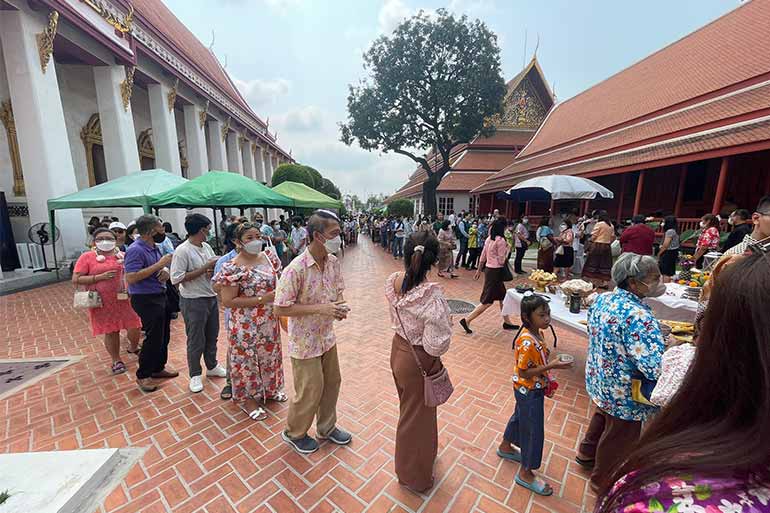 People standing in queue to offer puja
People standing in queue to offer puja
The king, or Chief Royal Astrologer acting on the monarch’s behalf, then issues an official notification to the public, called Prakat Songkran, containing information on Maha Songkran, Thaloeng Sok, the lunisolar calendar, and religious and royal ceremonies. Quite a bit like our beloved ‘panjika’!
Songkran is also famed across Thailand as a water festival. According to one school of history, its origins are linked to trade with ancient India, and the annual victory festival performed by the Chola rulers of India, and the Srivijaya empire of what is now Indonesia, a maritime and commercial kingdom that flourished between the 7th and 13th centuries.
Most of those links have been lost in the mists of time, but the quasi-religious folk rituals and songs in many parts of India, including Bengal, bear lovely descriptions of trading vessels that travelled from India to countries like Siam (modern Thailand) and Kamboj (Cambodia). Another good example of this would be Chandi Mangal by Kabikankan Mukundaram, which contains several references to this connection.
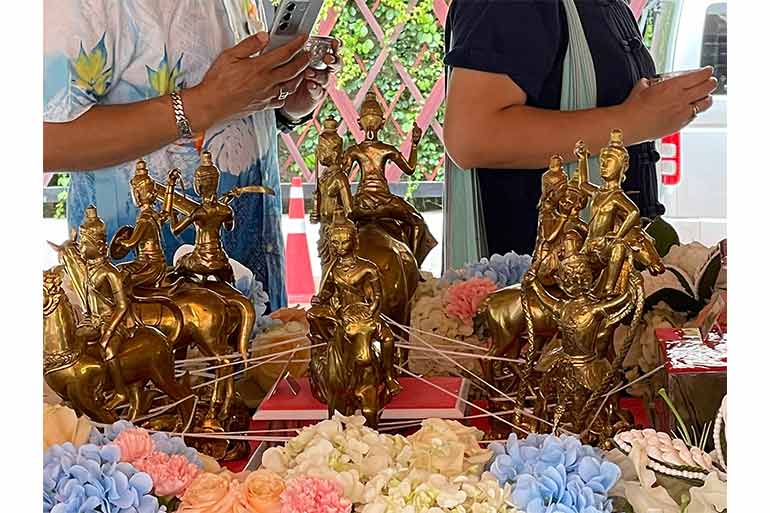 Divine Thai navagraha idol
Divine Thai navagraha idol
Ancient schools of thought hold that Songkran marked the beginning of new voyages to Indian territories such as Anga (roughly modern day Bhagalpur in Bihar), Banga (Bengal) and Kalinga (Odisha), driven by seasonal winds. It was also a celebration of successful trade conducted over the past year. And so ordinary people would perform ritual worship, wear new clothes, and spring clean their homes as part of the festivities.
Today, the celebrations begin with a ritual washing of the feet of the Buddha using flavoured water, and offerings of flowers, fruits, incense and candles. Devotees also wash the feet of holy men and elders with aromatic water, and donate to charity according to their means. This is followed by a more lighthearted playing with water, as people – locals and resident foreigners alike – soak each other in clean and sometimes flavoured water and smear each other with white powder. The three days of Songkran see brisk sales of garlands of jasmine, and orchids. Plenty of people wear floral patterned clothes, and garlands of orchids around their necks and heads, and participate in all manner of song and dance.
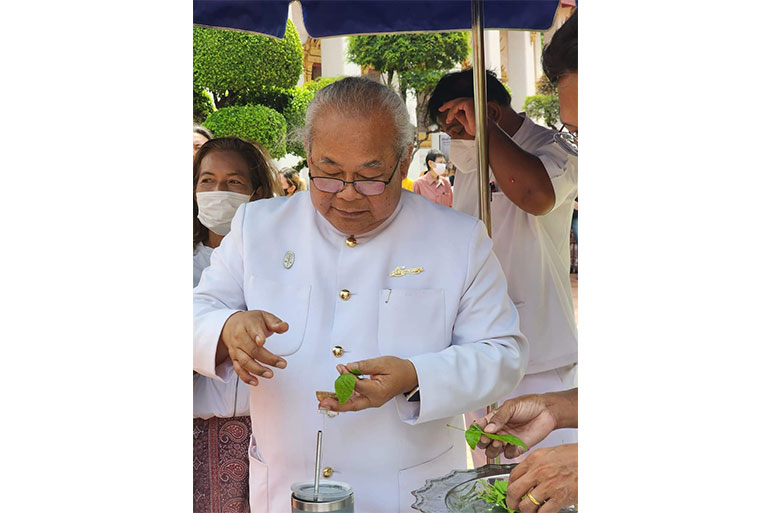 Thai Hindu Brahmin performing new year puja rituals
Thai Hindu Brahmin performing new year puja rituals
Families try their best to celebrate together. I have seen firsthand the thousands of cars that make their way out of the capital Bangkok as residents travel to other parts of the country to be with their extended families for Songkran. Beautifully made up women dressed in colourful ethnic attire form a major component of the festival. A do various delicious Thai desserts, chief among them being Thongyod, made of egg yolk, flour, and floral syrups. Thongyod is a symbol of good luck and balance. That apart, northern Thailand is famous for its very popular chicken and egg salad called Yum Gin Gai.
Nearly every Buddha statue in Thailand is cleaned before Songkran, whether at home or in a temple. Makeshift pumps are used to link all the canals of a city, and the water thus obtained is also used to clean all major roads in cities and villages.
Yet another fascinating feature of Songkran is the worship of Lord Ganesha and the ‘navagraha’ or nine planets, both among the royal dynasty and ordinary citizens. According to Thai mythology and ancient Thai texts, each of the nine planets has distinct characteristics and origin stories. According to these stories, when creation was destroyed in the cycle of destruction and rebirth, Lord Shiva created new life in the universe and shaped the nine planets to regulate the laws of creation. The planets were supervised by Shiva’s son Ganesha, leading to the belief that the best way to keep the planets happy is to keep Ganesha happy.
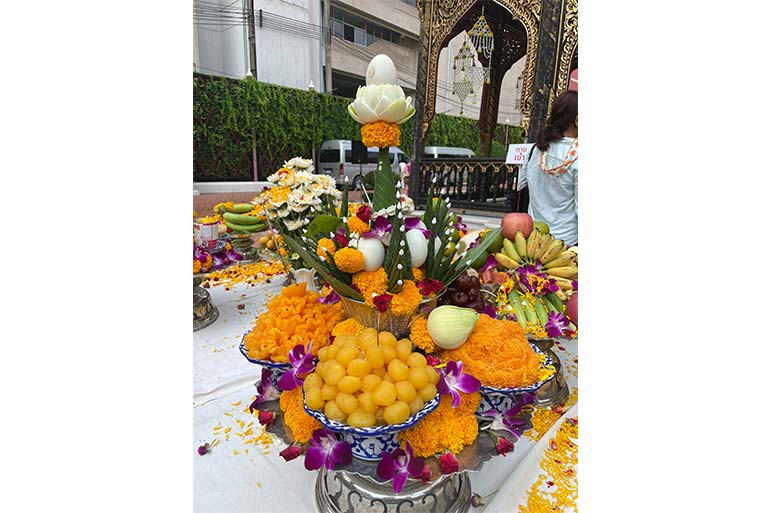 New year offerings adorned with fruits and flowers
New year offerings adorned with fruits and flowers
While Indian astrology revolves around the sun, moon (both treated as planets), Mars, Venus, Mercury, Jupiter, and Saturn, as well as the cosmic bodies Rahu and Ketu, the Thai version uses seven specific deities to name the seven days of the week, who are each linked to a planet.
Phra Athit (Aditya, the Sanskrit name for the sun) stands for Sunday
Phra Chan (Chandra, or moon) stands for Monday
Phra Ang Kan, Mongkhon (Mangal) – Tuesday
Phra Phut (Budh) – Wednesday
Phra Pruehatsabodee (Brihaspati) – Thursday
Phra Suk (Shukra) – Friday
Phra Sao (Shani) – Saturday
According to Thai belief, Phra Rahu and Phra Ket (Ketu) complete this set.
The new year is not merely a festival for Thais. For them, it is a purifying ritual, as though they were observing the concepts of ‘antahshauch’ (internal cleanliness) and ‘bahishauch’ (external cleanliness) advocated by Shri Krishna in the Bhagavad Gita.
Images courtesy: Ploy Yamapaywon, Pichada Rajavechpisal, Monk Apichet







